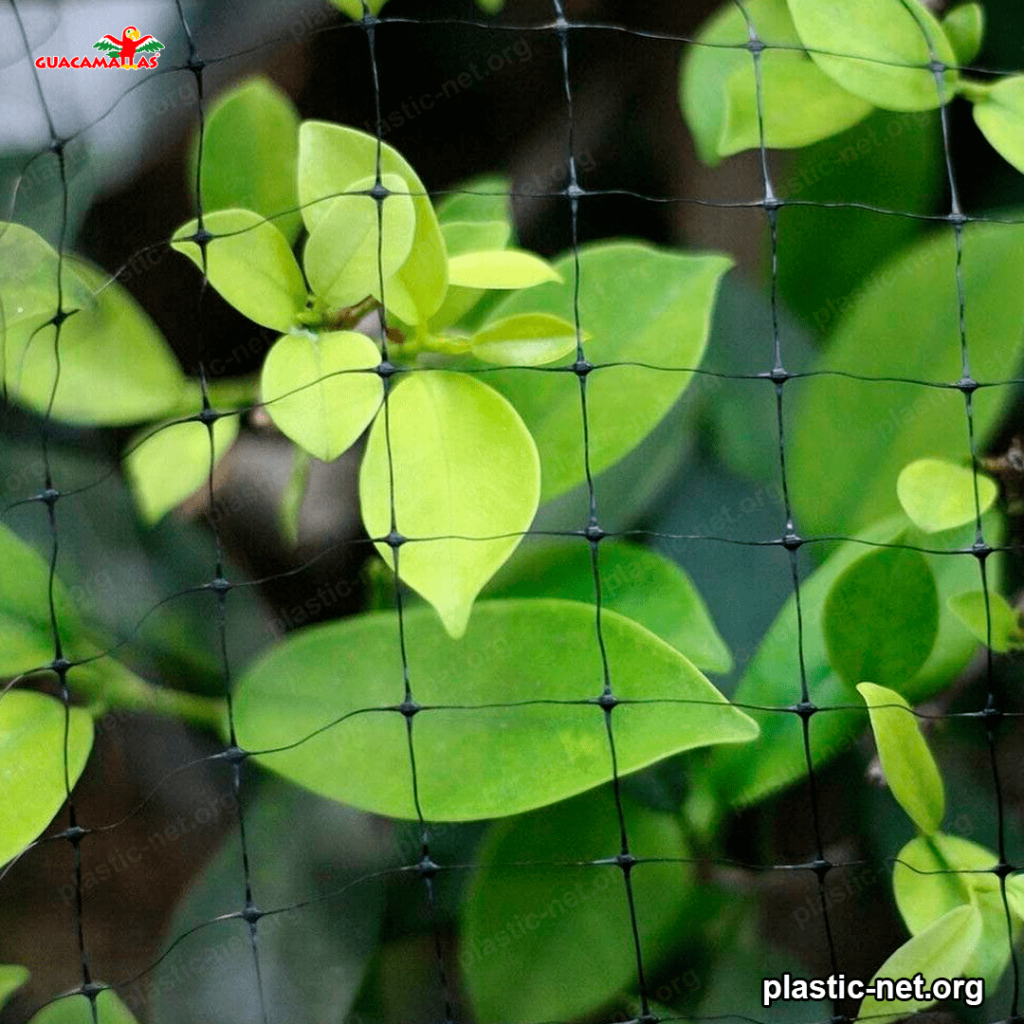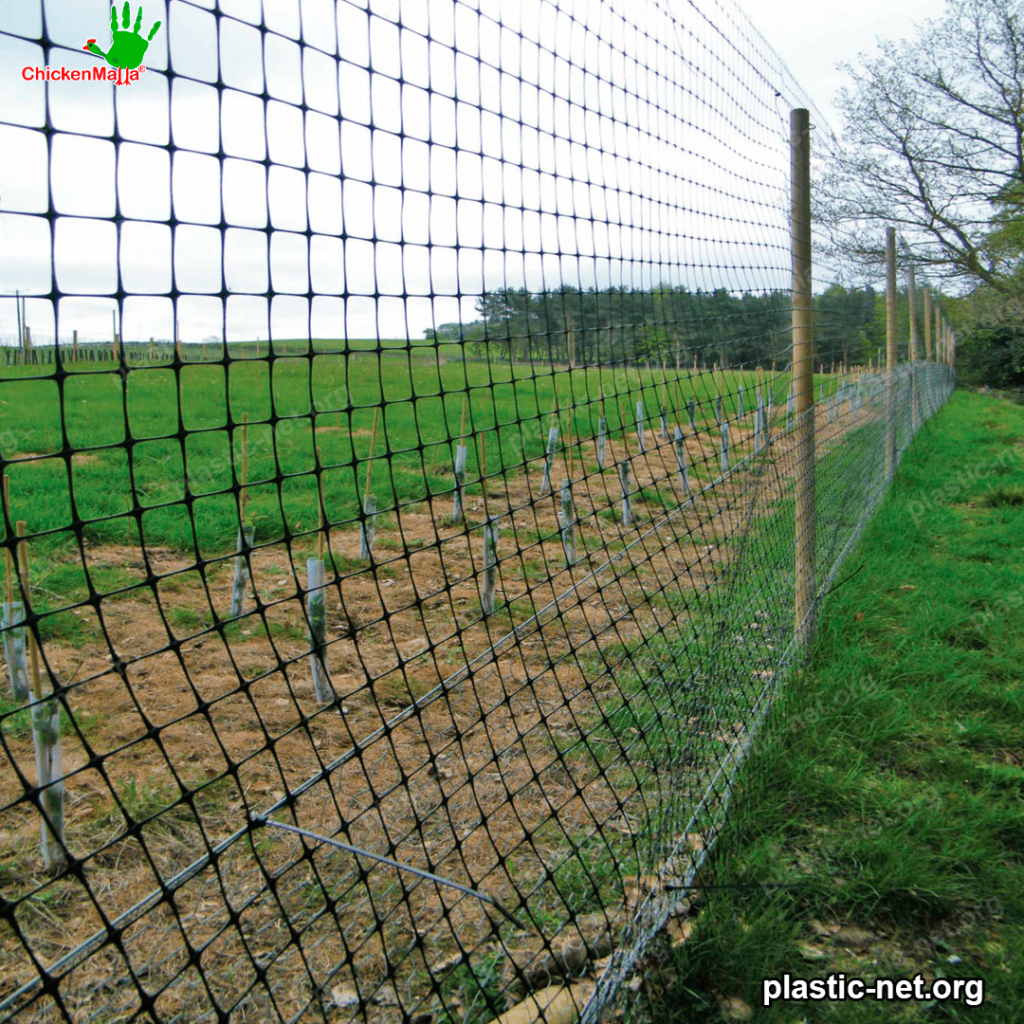Introduction
Plastic netting in agriculture can be a useful tool for the farmer for various uses. The most common use of plastic netting is for weed control. By using the netting as a way to separate the soil from the surrounding environment, wasted time, money and effort to clear the land and water the soil is avoid. Allowing plant roots to grow freely.
This is especially useful for vegetable crops, as most weeds can share with their roots for soil nutrients. An important use is to reinforce the sides of roads and rural roads. Plastic netting in agriculture has the added flexibility to withstand the heavy storms that often fall in rural areas. Which helps prevent erosion of a road. This is because sediment accumulates on the mesh, which allows the top layer of the road to remain undamaged.
It is also common for farmers to use plastic netting in agriculture as protection around fruit and vegetable trees
These nets can serve as a physical barrier between the tree and wild animals that might eat its fruits and vegetables. This use can also be use to prevent damage to trees due to wind, snow, rain or excessive heat.
One of the most popular uses of plastic netting in agriculture is the construction of grazing fences. These fences can be quickly install to keep animals inside a farm. When used correctly, these fences minimize damage caused by overgrazing, as well as damage to the land.
Overall, there are countless ways farmers can benefit from the use of plastic netting in agriculture. These are just a few of the ways in which plastic netting in agriculture can help the farmer achieve his goals. As technology advances. It is likely that new uses and applications for plastic netting in agriculture will develop. Allowing the agriculture industry to unlock its full potential.
What improvements the use of plastic netting in agriculture has brought about
The use of plastic netting in agriculture has become an increasingly common practice due to the abundant benefits it provides. Plastic netting in agriculture is a useful form of cover to control agricultural production, and its use extends to multiple areas. These plastic textiles replace many traditional barricades and forms of support, including plant stems, fruit trees and horticultural crops. These plastic nets offer several benefits, including lengthening the production cycle, cost savings on equipment needed for crop protection and the formation of favorable environments for increased plant growth and improved quality and quantity of agricultural products.
Through their use, it is possible to create more protected environments for crops, reduce environmental impact and save on production costs. These nets allow rain discharge, sunlight absorption and the design of ventilated growing conditions to improve crop productivity. These conditions created from the netting allow farmers to control the incidence of crop diseases. Reduce pesticide application, limit fertilizer use, improve soil conservation, increase the quantity and quality of produce, and ensure better profitability. The use of plastic netting in agriculture also helps reduce the impact of drought and wind on crops, fruit loss and plant resistance.

There is a wide variety of plastic netting in agriculture is used in agriculture
With different formats, sizes, weights and colors to meet different needs in agricultural production. These products offer effective solutions to agricultural production problems, helping to increase productivity and profitability. For example, in the fruit sector, semicircular mesh, square mesh for manual or mechanical harvesting and square mesh for weed control are some of the most commonly used plastic nets, among others.
The use of plastic nets in agriculture offers great benefits and advantages that allow greater production, quality and profitability, in addition to allowing better conservation of crops and resources. This means that their use will be increasingly important for the future of agriculture.
What economic benefits are generated by the use of plastic netting in agricultural crops?
Plastic netting in agriculture is a material that has become a very useful tool for farmers. This form of netting offers a number of economic benefits that directly benefit those who grow agricultural products. These benefits include, but are not limited to, compatibility with many different types of substrates and soils; strength and corrosion resistance; weather resistance; as well as being a natural barrier and an excellent choice for exporting produce.
There are a number of benefits for growers in being able to use warm, hollow alternative substrates to provide better crop growth, saving the grower a great deal of work in land preparation. In addition, the growth of aerial coverage with plastic netting in agriculture helps increase irrigation systems. Creating a moist and warm environment in which crops grow more uniformly and productively. Another economic benefit of plastic netting in agriculture is its durability. This means that the same materials last for numerous crop cycles, offering growers great savings in material cost. Plastic netting in agriculture does not require frequent maintenance or material replacements and its rough surface aids in time retention. This means farmers spend less on maintenance and maintain more time to devote to crop maintenance, producing higher yields in less time.

The use of netting is beneficial for growing organic crops, as it helps conserve soil
This function is achieved by helping to conserve moisture in the soil while greatly reducing erosion problems. This contributes to more fertile soils that do not require fertilizers and pesticides to maintain. This, in turn, benefits the farmer in terms of price and economy as it improves the quantity of crops without having to spend on manure and other fertilizers.
It is an excellent option to improve product export processes. This is because plastic netting in agriculture offers excellent resistance to temperature changes and product hygiene. This means that farmers can easily transport their produce over long distances, minimizing the risk in transport and preserving the properties of the crop. This is crucial for growers who want to export their produce and maintain the highest quality of their crops.
Plastic netting in agriculture offers many economic benefits. Farmers can use it to save on materials, time and soil preparation costs. This netting is also excellent for irrigation, improves soil resistance and increases crop production. Finally, this material is also useful for transporting products over long distances. All these benefits make plastic net an excellent solution to save money and improve the quality of agricultural crop production.
